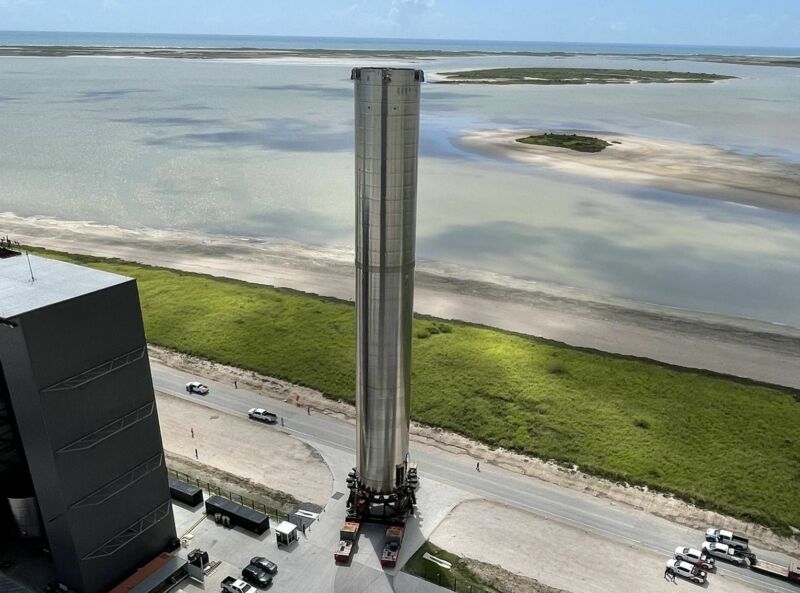
SpaceX seems to have gone a long time without launching—or blowing up—a rocket at its South Texas launch site. A little more than two months have passed since the company launched its SN15 Starship prototype to an altitude of 10 km before safely landing the vehicle on May 5.
The SpaceX engineering team apparently got the data it needed from that test flight, because the company scrapped plans to fly its next prototype (the SN16) in favor of moving toward higher flights. Accordingly, activity at the so-called "Starbase" facility near Boca Chica, Texas, has focused on building up capabilities for an orbital launch attempt of the Starship system.
During the last two months SpaceX has constructed a massive launch tower to support a full stack of the Super Heavy booster and the Starship upper stage. The company has also built several new large tanks as part of the ground-support equipment that fuels the massive vehicles with liquid oxygen and methane.
Starbase Production Diagram - 13th July 2021 pic.twitter.com/1H5Bf3Gqdm
— Brendan (@_brendan_lewis) July 13, 2021
Finally, SpaceX technicians and engineers have been assembling the Super Heavy boosters themselves, and the company rolled "Booster 3" to the launch pad at the beginning of July. This is the first full-scale booster prototype to actually undergo testing, and it has passed cryogenic pressure tests of its fuel tanks.
This week, the company added three Raptor rocket engines to Booster 3 and told area residents it may conduct a static fire test of the vehicle as soon as Thursday, July 15. The road closure schedule indicates a potential test window from noon, local time, to 10 pm (17:00 UTC Thursday to 03:00 UTC Friday).
SpaceX founder Elon Musk has said Booster 3 will not launch, but if all goes well with its ground testing, the company will proceed with a launch of Booster 4. This rocket is already being built at the company's assembly facility a few kilometers from the launch site in South Texas. Whereas SpaceX is testing Booster 3 with three Raptor engines, a fully orbital version of Super Heavy will have 33 of the methane-fueled Raptors.
In parallel, SpaceX has been building "Ship 20." (SpaceX has abandoned the SN nomenclature for Starship prototypes and now calls them "Ships.") This is the first of a new generation of Starship prototypes with features that will allow them to ascend into space and then return to Earth. Much of the Ship 20 rocket is already complete in a high-bay facility in Boca Chica, Texas.
All of this work—on rockets, the tower, and ground systems—is in preparation for the test launch of Super Heavy and Starship later this summer. SpaceX wants to make this test flight—which will see the Starship vehicle travel most of the way around Earth before making a controlled re-entry into the ocean north of Kauai—as early as August.
However, regulatory hurdles remain. In addition to all of the technical work and testing to be done, SpaceX still needs to obtain launch permission from the Federal Aviation Administration, which is reviewing the environmental status of the launch facility in South Texas. The FAA said, as of May, it has yet to make a decision on whether to allow SpaceX to launch orbital Starship missions from South Texas.
Listing image by Elon Musk
"heavy" - Google News
July 15, 2021 at 12:42AM
https://ift.tt/3B5s3oD
SpaceX will soon fire up its massive Super Heavy booster for the first time - Ars Technica
"heavy" - Google News
https://ift.tt/35FbxvS
https://ift.tt/3c3RoCk
heavy
Bagikan Berita Ini














0 Response to "SpaceX will soon fire up its massive Super Heavy booster for the first time - Ars Technica"
Post a Comment